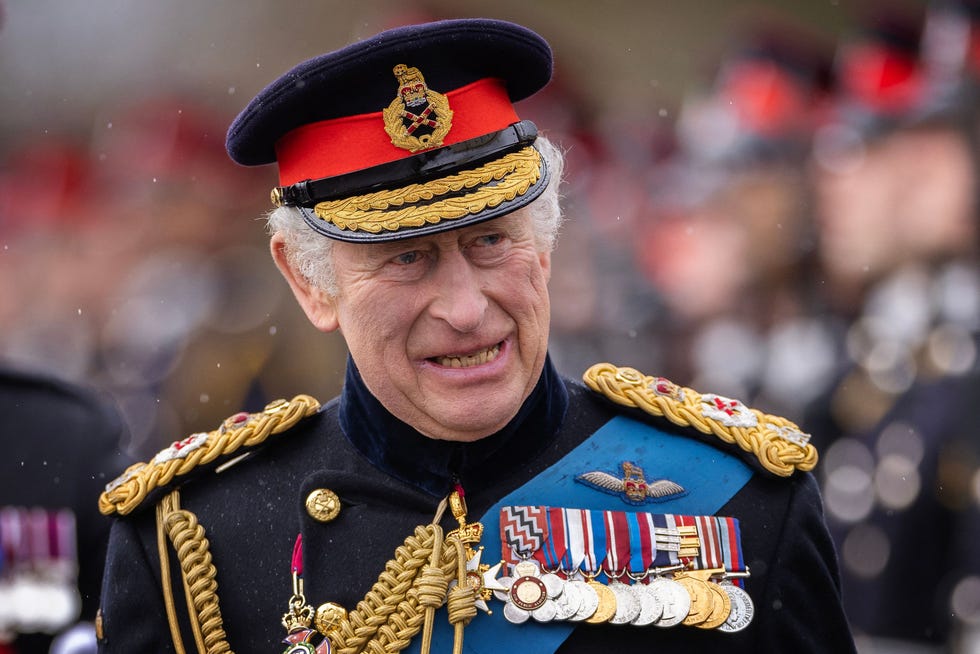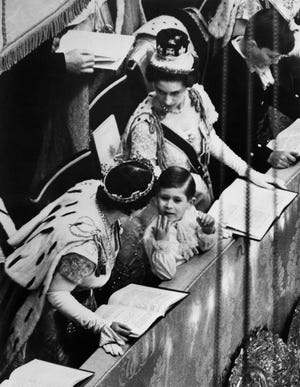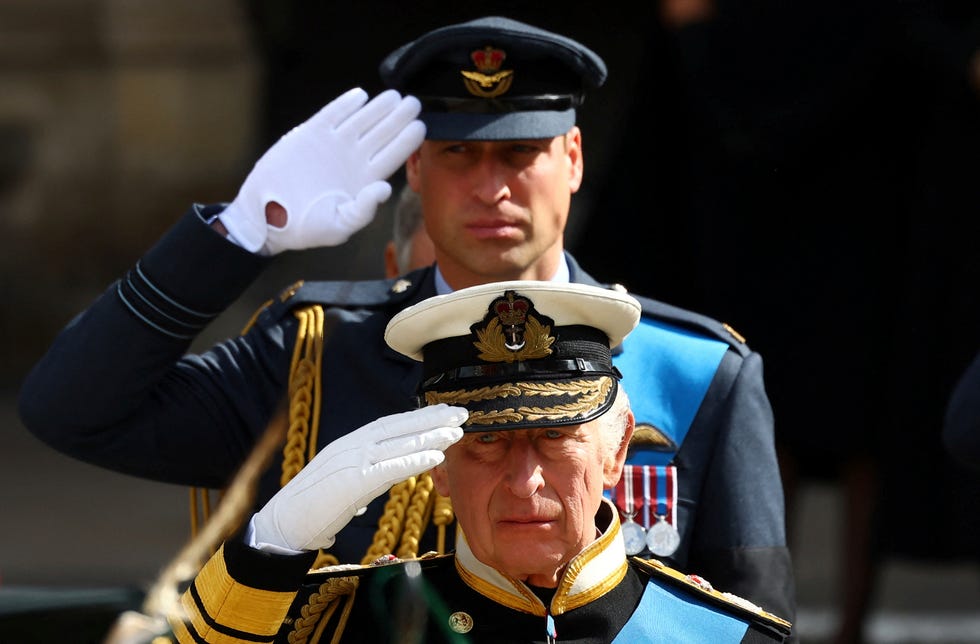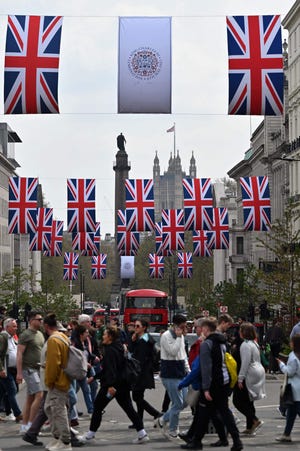King Charles' coronation arrives 70 years after Queen Elizabeth was crowned: What's changed?

On a soggy London day in June 1953, a bright-eyed 27-year-old married mother named Elizabeth was coronated as queen of England. Her coronation launched a seven-decade reign that would see radical transformations to her family, kingdom and the world.
On Saturday, nearly 70 years later, a gray-haired 74-year-old grandfather named Charles, Elizabeth's oldest son, will be crowned King Charles III, a leadership post sure to be challenged by a fractured family, a skeptical kingdom and a tense world.
In historical substance, these two coronations echo each other – from the pomp of the public procession to the solemnity of the tradition-steeped church ceremony. But in many ways, these seemingly similar events from two disparate centuries could not be more different.
How to watch:King Charles III's coronation without going to Westminster Abbey
10 things to know:UK's new monarch King Charles III ahead of his coronation
"This is a coronation like no other," says Christopher Andersen, author of "The King: The Life of Charles III." "The really big, historically unprecedented differences this time around revolve around the two people being crowned and their extraordinary journey to this moment."

Where Elizabeth II represented youthful hope after the tumult of World War II, King Charles III is being crowned as war rages in Ukraine and political and financial tensions ramp up across Europe and the globe.
Where Elizabeth became ruler of a largely enthralled and still sprawling empire, Charles inherits skeptical subjects hailing from a diminishing commonwealth of nations that increasingly question the very need for a monarchy.
"There may be some diversity in the parade this time, but these are all PR exercises and not serious attempts to atone for the family's institutionally racist role," says Kehinde Andrews, professor of Black studies at Birmingham City University in England.
"The reality is there is nothing (King Charles) could do but abolish the monarchy if he wanted to reconcile that history and today's present," Andrews says. "The uncomfortable truth is that the royal family is popular because it represents whiteness and is a colonial link to when Britain was 'great.'"
A look back at all the details:Queen Elizabeth II's coronation was nearly 70 years ago
From a 1953 TV event to a 2023 social media frenzy
Perhaps without fully realizing its impact, Elizabeth fundamentally changed the once hyper-private nature of the centuries-old British monarchy when she requested that her coronation including the ceremony in Westminster Abbey be the first such investiture to be televised.
"It's at that moment that the idea of the monarchy as a national spectacle begins," says Alban Webb, lecturer in media and cultural studies at the University of Sussex in England. "You have the British Broadcasting Service as this mediating force that is able to convene the nation at a particular moment for a particularly special ceremony.
"This is a story of continuities as well as really significant changes," says Webb, "both in terms of how the media capture these events, how they then get circulated in culture, and then what we do with them as viewers, as audiences, as users of media content."
But where television was a one-way lecture between program and audience, today's internet age means Charles' coronation will be less appointment viewing for most and more available for quick glimpses on smartphones around the world.
"The way that people are going to consume this event, on a multiplicity of media channels, makes it a bigger media event" than its 1953 counterpart, says Ed Owens, historian and royal commentator.
Meanwhile, social media has the potential to turn what was once a very solemn event into a chance to comment on everything from Queen Consort Camilla's hairdo to a misstep in King Charles' gait.
When Queen Elizabeth took the throne, "she still had a regal presence, but we know way too much of the family's dirty laundry now to hold them in such esteem," says Birmingham City's Andrews. "The sheen has worn off and we now realize the emperor never had any clothes. So Charles' coronation will be far more muted that the one for his mother."

Charles' 'slimmed-down' monarchy means fewer guests, shorter route
The historical backdrops to the two coronations differ greatly. In 1953, the calamitous world war was a recent event and much of Great Britain was still in smoldering ruins while its people made do with rationed goods.
"Seven years after the end of the Second World War, a time when Britain felt it was genuinely on the brink, you have a new queen, who was glowing in the glory of her father who stood steadfast during that conflict," Webb says. As a result, "there was an incredible amount of positive sentiment toward the monarchy. People just wanted to come out and celebrate."
And celebrate they did. In fact, to ensure that Queen Elizabeth could be seen by the estimated 3 million people who lined London streets that day for her more than 4-mile coronation procession which ran "from Westminster back to Buckingham Palace involved 16,000 participants," according to Andersen who said "the entire trip took two hours."
"Charles, on the other hand, will be taking a shortcut," he says, using a planned route that will be a little more than a mile and should take around 40 minutes.
In addition to that change, Charles' coronation ceremonies will require around 6,000 British military personnel – a fraction of the more than 40,000 troops and 7,000 police on hand during his mother's festivities. Charles will have around 2,000 guests at his coronation; his mother welcomed closer to 8,000 relatives, friends and dignitaries.

Those shifts are not because the palace can't afford more staffing or couldn't drum up more guests. Rather, it's a nod to the so-dubbed "slimmed-down" monarchy that Charles has promised.
"The palace has tweaked the coronation just enough to make it clear that King Charles intends to make good on his promise to streamline and modernize the monarchy," Andersen says.
Adds Webb: "Context is king. We're in a cost of living crisis, (and) the idea that you would have an expensive carnival of celebration doesn't fit well."
The detailsKing Charles III's coronation oil has special connection to late mother Queen Elizabeth II
Elizabeth was a young mother; Charles is a divorced grandfather
One unmistakable difference between these similar events separated by seven decades is the person in the spotlight.
Elizabeth Windsor was a young bride with two toddlers when, on a trip to Africa, she received word of her father's death. At age 25, she was her nation's new sovereign. She would dedicate her entire life to fulfilling those duties until she died at age 96 in 2022.

By contrast, Charles III waited his entire 74 years to ascend to the throne. Over that time, he wed Lady Diana Spencer and had two boys, Princes William and Harry. He then divorced Diana, who died in a car accident in 1997, and took up with an early flame, Camilla Parker-Bowles, now his wife and queen consort.
Charles III is not only the first divorced person to be crowned, but Camilla is the first mistress of a monarch and divorced woman to join him as queen consort. Furthering the contrast between Queen Elizabeth's comparatively intact family ties, Charles III currently is contending with feuding sons.
Yet tradition is a hard thing to kill. That's especially true in the case of the British royal family, where coronations have been happening for nearly a millennia.
"In a sense, interest in the royal family is as intense as it's ever been," says Andersen. "But whether they can keep that those plates spinning, you know whether Charles can can earn the kind of affection of his people and the world at large the way the queen did — we have to wait and see.
"The difference between them is the queen knew who she was, and we knew who she was," he says. "Charles is full of very complicated, he's full of self doubt. And he's still a work in progress."
King Charles' coronationGuide of crowns, rings, scepters and other shiny royal jewels

No comments: